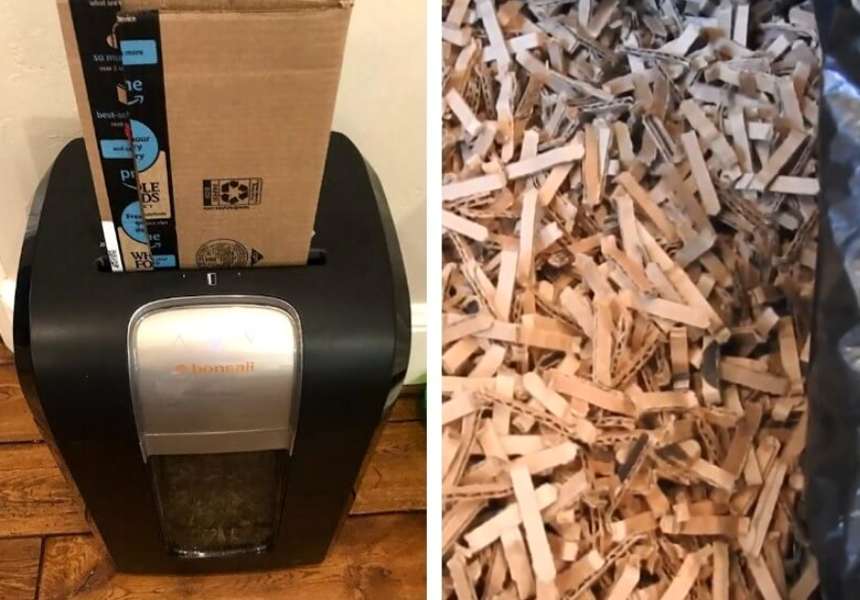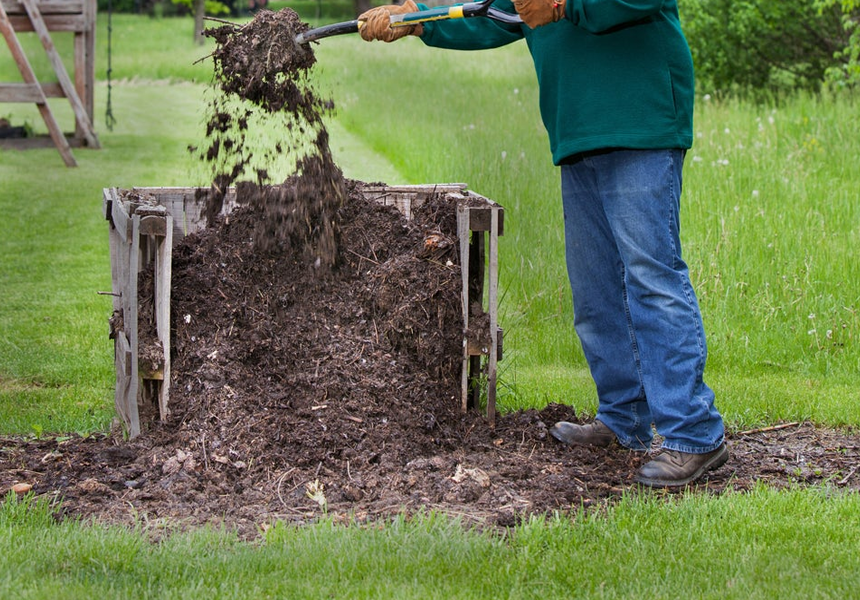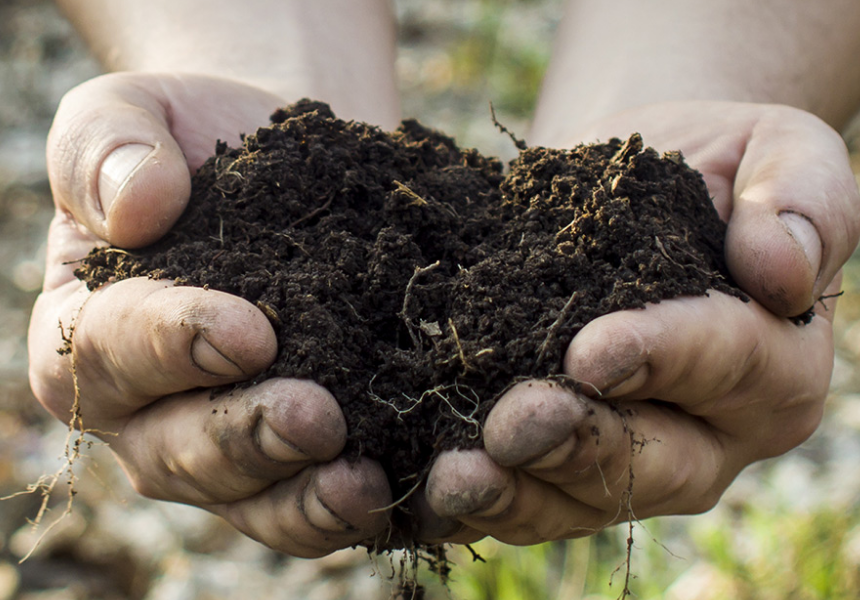
Creating perfect compost for your garden often begins with vermicomposting, which uses worms to break down leftover food scraps, waste, grass, and leaves to create the best compost for your garden. In this review, we’ll take a look at the best worm composters available on the market.
In this deep dive into the best worm composters, we’ll take a look at six of the best products on the market today. We have made our determination on these six after a thorough review of over 20 different worm composters. At the end of the day, we believe that our Editor’s Choice, the Quest 4-Tray Worm Compost Kit, is the best vermicomposting bin around thanks to its relatively compact design and flexibility in terms of adding or reducing sections. We’ll also review five other worm composting bins that we think make the cut and are worthy of your attention.
In this article, we evaluated a number of key features of these worm bin composters, including their dimensions, weight, number of sections, and if they have a tea spigot. These traits are all important because it can help you determine where to place this worm composting bin and how much you can effectively put in it. This research took more than 65 hours, and we carefully scanned through official websites of these worm composters as well as the customers’ reviews to give you a clear idea of what you should be looking for. After the detailed reviews of each product, we’ll then turn to our buying guide, where we give more information about worm composters. Let’s get started!
More features: great air ventilation, minimizes odor, portable design
First of all, this worm composter is a lot smaller than many people seem to think it is. We’ve put that as one of the cons but in reality, just make sure that you check the measurements before you get it as the size may be perfect for you. The other negative we had was that there are a few sharp edges so sometimes you need to handle it with a little care.
That size makes it ideal for placing indoors with many people finding that the perfect place for it is under their sink. Importantly, the worm composter is highly effective, and it will get rid of your waste food in a highly productive way.
It’s very easy to use, and you’ll know what you’re doing in no time at all, even if you’ve never used a worm composter before. It comes with a tea spigot, which is a useful feature. You’ll also appreciate that you don’t seem to get any odor from it. It’s the perfect composter for anyone looking for something a little more compact.
More features: easy-pouring drip tray, removable filter, wheels for better portability
For one of the most convenient worm composters on the market, check out our Upgrade Pick, the Hungry Bin Worm Farm. This is one of the best worm composters because it is excellently constructed, with its rugged yet heavy design, and is very easy to use. It is much larger compared to other worm composters and takes up quite a bit of room with its 24” x 26” frame. Therefore, you’re more than likely to place it outside your house. It also weighs a bit more than other worm composters and costs a lot. Despite this, it is very simple to maneuver this worm composter around because it has wheels and handles.
This worm composter boasts the ability to break down your waste quickly. One of the best features of the Hungry Bin Worm Farm is its simplistic design – there is no need for different trays on levels that you need to re-arrange. This one comes with three pre-set sections that all work well together to produce the best compost.
On a daily basis, it can process slightly over four pounds of waste per day. Once that is done, you can then take all the moisture from the worm castings to make your own worm tea that you can then use to fertilize your garden. One of the drawbacks of this worm composter is that you will have to check the temperature outside quite frequently because worms do not react well to a hot or cold climate.
More features: breathable fabric construction, zippers, lifetime warranty
If sorting through the worms in multiple layers isn’t for you, you might want to consider our Best Value choice, the Urban Worm Bag Version 2. You’ll eliminate the hassle of separating worms from trays with this unique-looking worm composter.
First of all, this affordable worm composter is very lightweight as it only weighs 8.5 pounds, but it takes up a bit more space with its 27” x 27” construction. Thus, you’re probably better off with leaving this worm composter outside. What’s great about the Urban Worm Bag is that despite not having levels or sections, the ‘bag’ area can still contain up three times the volume of stackable bins.
The bag is made of sturdy 900D Oxford fabric that can easily accommodate up 120 pounds of worm compost. This fabric also helps to keep the compost odor-free. In terms of when you can expect your worm harvest, you’re looking at anywhere between 4-6 months. Setting up and getting started with this worm composter is very easy as well since it takes almost no time to install, and all that is required is you to unzip the top of the bag and toss everything in. You can keep adding to your waste every day, and the worms will naturally move higher and leave their castings below. To harvest the compost, you unzip the bottom of the bag and watch your castings fall out into a bin or container (does not come with the worm composter). This process is much simpler than rearranging the levels or sections with a tower-style composter.
More features: includes infographic refrigerator magnet, instructional manual, three colors available
The Squirm Firm makes another entry in our list of the best worm composters, this time with their Worm Factory Worm Composting Bin. Much like its cousin, this bin has an adjustable number of sections from 3-7 that can be vertically layered on. In fact, this Worm Composting Bin is very similar in design and structure to the Worm Factory 360. However, this one actually takes up slightly less room at 17” x 16”, and you can keep it inside your house too if you want. It only weighs 13.5 pounds, so its size is not an issue at all.
This Worm Composting Bin comes with a standard 4-tray size that can each produce up to 13 pounds of worm castings. Since this does come with adjustable sections, you’ll have to arrange and re-arrange the trays yourself. Like the Worm Factory 360, this worm composter also has a built-in worm tea-collecting tray with a spigot.
If you think this Worm Composting Bin might not be a good fit inside your house because of the odor, we’re happy to tell you that it is virtually odor-free. Another helpful thing this worm composter comes with is a very detailed 38-page instruction manual that breaks down how to manage your worm factory to produce the best compost. Unfortunately, among the main complaints about this worm composter are that it can attract many flies, which can be especially annoying if you store it inside.
More features: includes infographic refrigerator magnet, instructional manual
One of the best worm composters out there right now is also our Editor’s Choice, the Squirm Firm Worm Factory 360. There are a number of fantastic features with this worm composter, so let’s dive right in. First, this multi-level worm composter is compact and small enough to be used either indoors or outdoors, as it only measures out to 18” by 18”. Thus, you can use it as a kitchen compost bin if you want close access to it, or you can leave it in your backyard if you please. Just know that this worm composter can often attract fruit flies, and you’ll have to decide whether that bothers you enough not to keep it in your kitchen.
This worm composter is also great because you can add or remove the levels. This process is quite simple, and adding a new layer won’t take up much space. It comes with 4 layers, but you can add up to 8 total sections. At the bottom of the composter, there is a spigot, which helps to collect worm tea. Mix it up with some water and then spread it on your flowers and grass to help them grow faster.
This composter also comes with a handy instruction guide as well as an informative DVD to give you some useful tips. As for the setup of this composter, you can easily install it anywhere you want, but make sure to protect it properly if you plan to use it outside.
More features: 360 degree airflow, tea collected in the bottom tray, BPA-free, UV-inhibited
At first glance, the FCMP Outdoor Living Composter looks more like a piece of stylish furniture than a worm composter, and that’s purely due to its design as it is meant to blend in with your house seamlessly. Your guests also wouldn’t even know it’s a worm composter because it produces minimal and nearly no odor too.
If we look closer, it is a great worm composter because it is constructed well and is durable. It doesn’t take up much space either as it measures 15” x 15” while weighing only 15 pounds. As you can clearly see, it comes with three sections, and each section retains a good level of moisture for the worms to do their thing.
As one would expect with such a simple-looking worm composter, it is very easy to set up and begin the worm composting process. Simply add your waste under the bedding and begin stacking the sections up. If you plan on buying this worm composter, however, you have to know what you’re doing because it comes with minimal instructions at best.
After presenting these products to you, we’ll now turn our attention to the buying guide section. As we briefly touched on earlier, vermicomposting uses worms to help break down waste to produce fine compost for your garden. While there are quite a few worm composters to choose from, each has its own unique design and functionality. It ultimately comes down to what kind of worm composter will work best for you. We’ll explore a few key factors below to help you understand a bit more about vermicomposting, and in the end, we’ll give you the answers to some of the most frequently asked questions followed by our three favorite choices.
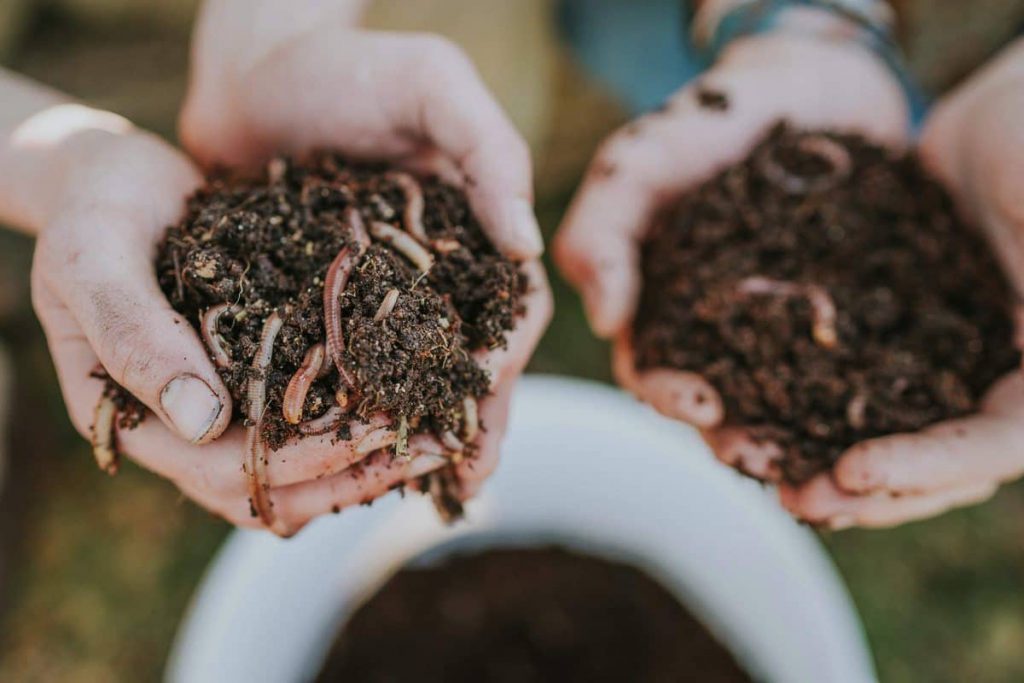
The dimensions of the best worm composters can vary between something that takes up little space under the table to something that is a bit bigger and requires to be placed outside. For instance, the smallest worm composter here is The Squirm Firm Worm Factory Worm Composting Bin as it has the size of 17 inches wide, 16 inches deep, and 15 inches tall. Note that the height of this worm composter can also increase if you add on more sections to it.
On the other hand, the biggest worm composter we saw was the Hungry Bin Worm Farm, which is capable of processing more waste at a time. It is 24 inches wide, 26 inches deep, and 37 inches tall.
If you plan to use a compact worm composter indoors, do not worry about bad smells coming from it since most of them are odor-free.
Even if you’ve found a spot for your worm composter where you’re not going to put it anytime soon, weight still can be important. Many worm composters don’t have wheels or handles because they are not designed to be transported around. Fortunately, some composters feature removable sections, which make the whole thing easier. Others will require you to empty out the contents before moving it if they get to heavy.
Although most composters lack portability, the Hungry Bin Worm Farm is actually very portable thanks to its handle and wheels. They are very helpful for such a heavy unit with high capacity.
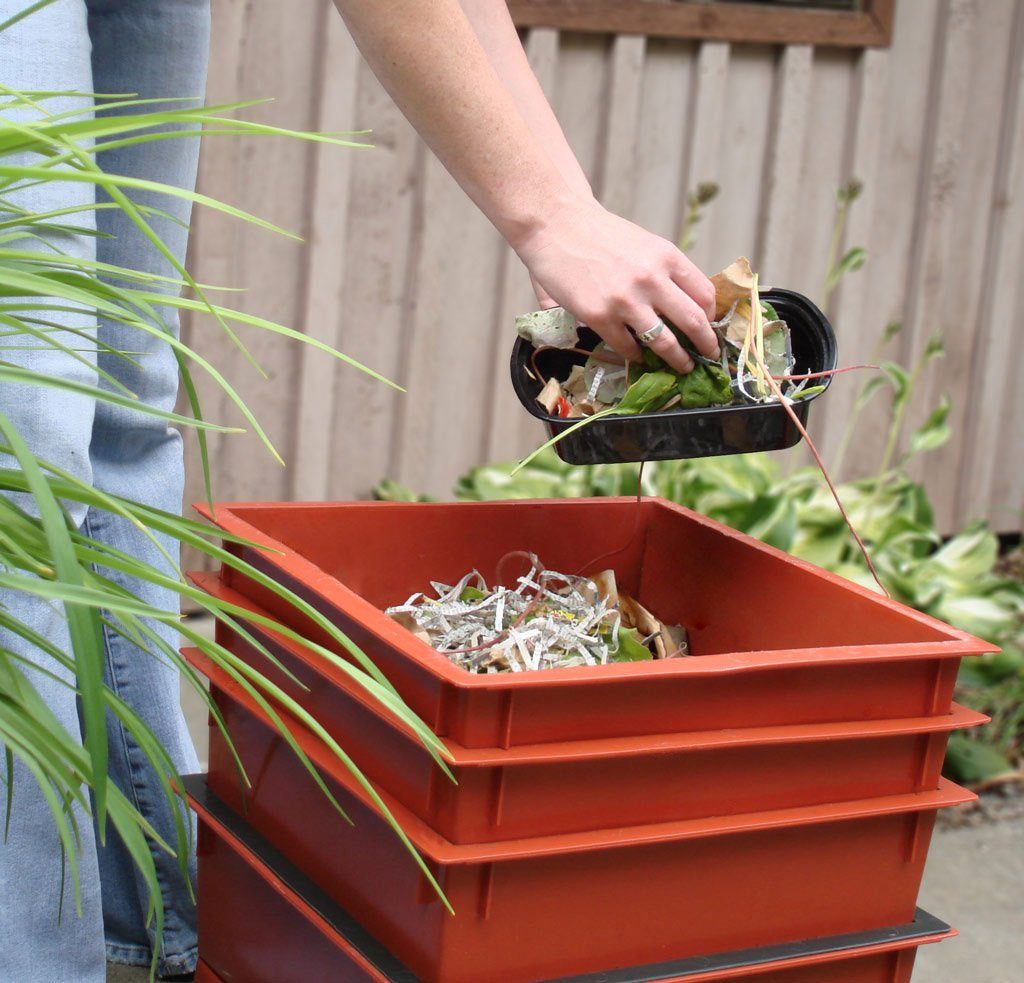
A good rule of thumb is that red wiggler composting worms can eat up to half their weight each day.
Lastly, with some of the worm composters, you can even collect worm tea in the bottom section and use the spigot to pour it.
As we just briefly mentioned in the previous section, most of the worm composters have some form of a compost tea brewer feature. The compost tea collected in the bottom section can be poured down with it to a different vessel without any spills or mess. Later, you can mix it with water to fertilize the plants in your garden.
While some worm composters have this tea spigot feature, others come with drain holes. The only issue with them is that it can be harder to pour the tea, and you will have to remove the base to do it.
Finally, we have a type of composters without spigots or drain holes. These can be harder to use, as some occasional spills might occur.
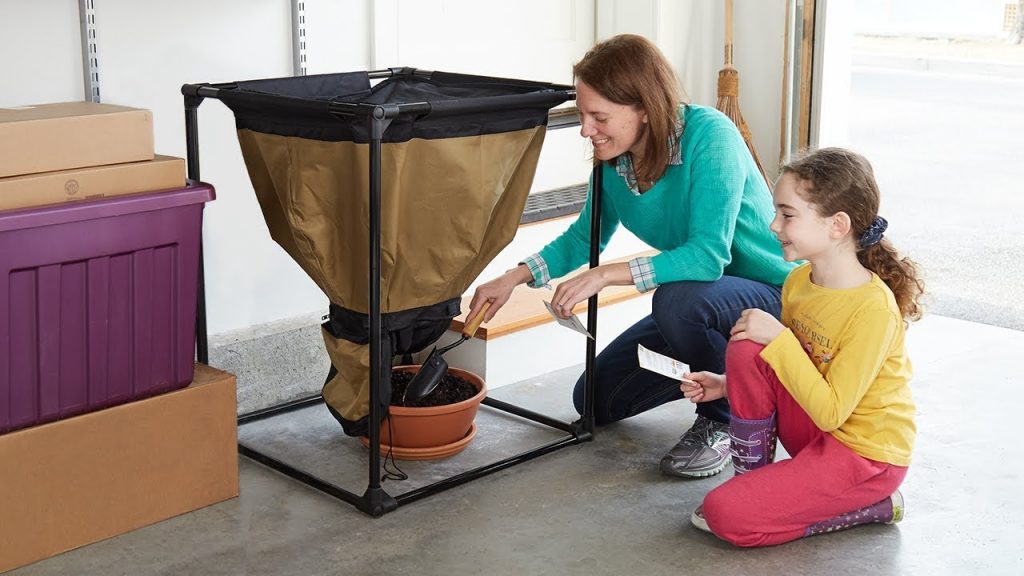
Some of the worm composters offer extra features as well. With something as nuanced as worm composting, having any kind of extra information or tips on how to do things properly would be helpful, and that’s exactly what The Squirm Firm Worm Factory 360 provides. The instruction manual and DVD it comes with are extremely helpful in getting you started and providing a wealth of great information. It also comes with a very handy infographic refrigerator magnet that you can refer to for quick and helpful tips as well.
Some worm composters are also made with environmentally-friendly, BPA-free materials. For example, that is the case with the FCMP Outdoor Living Composter.
Like many other products, worm composters can vary greatly in price. It can be quite hard to find out an average price tag for worm composters. To help you get a sense of the prices, we’ve broken them down into three categories: low, medium, and high.
In the lower tier, you can find the budget-friendly Urban Worm Bag Version 2 that costs $100. It is odor-free and capable of holding up to 120 pounds of compost.
In the medium tier), we have our Editor’s Choice, The Squirm Firm Worm Factory 360, and its cousin, The Squirm Firm Worm Factory Worm Composting Bin. They both cost somewhere around $150 and allow you to add or remove sections if you don’t need them.
Lastly, at the higher end range of prices, we’re looking at the Hungry Bin Worm Farm, which comes with a whopping price tag of $340, but is capable of processing up to 4.4 pounds of waste every day. Furthermore, it is highly portable, thanks to convenient handles and wheels.
Now it’s time for our final verdict, and here, we have our top 3 candidates.
Let’s start with our Editor’s Choice, the Quest 4-Tray Worm Compost Kit. You won’t need to read tons of instructions to use it. Just set it and you’re ready to go. Thanks to this unique design, it can be placed inside your house, under the sink, for instance, without ruining your kitchen’s design.
Next up is our Upgrade Pick, the Hungry Bin Worm Farm. This is great if you are looking for one of the best worm composters out there. Not only is it easily portable thanks to its handles and wheels, but it also does the job efficiently, and with its very simplistic design, it can process just over four pounds of waste every day.
One more worm composter worth considering is the The Squirm Firm Worm Factory 360. This worm composter is fantastic because it’s very affordable and offers you a great way to create compost thanks to the variable number of sections it can have at any time and the ease with which you can collect worm tea using the spigot.
